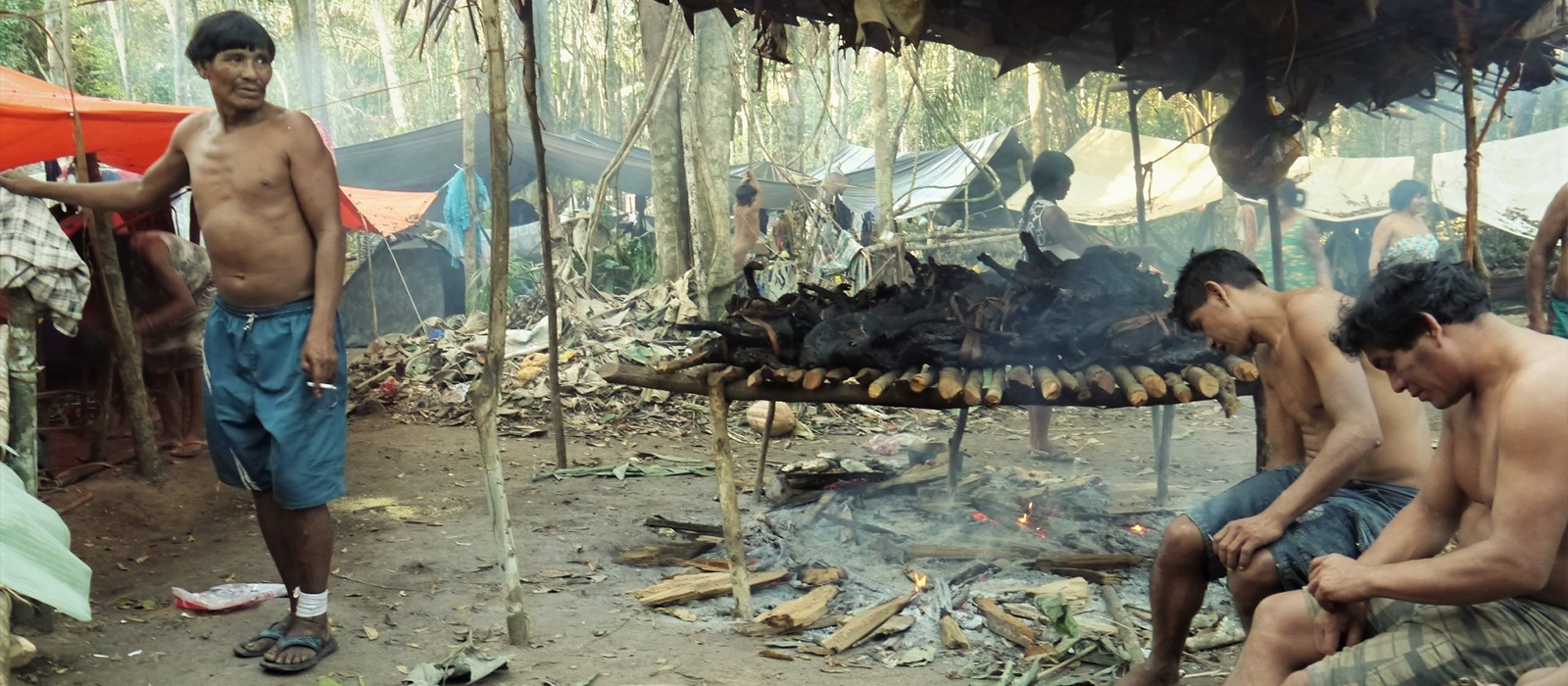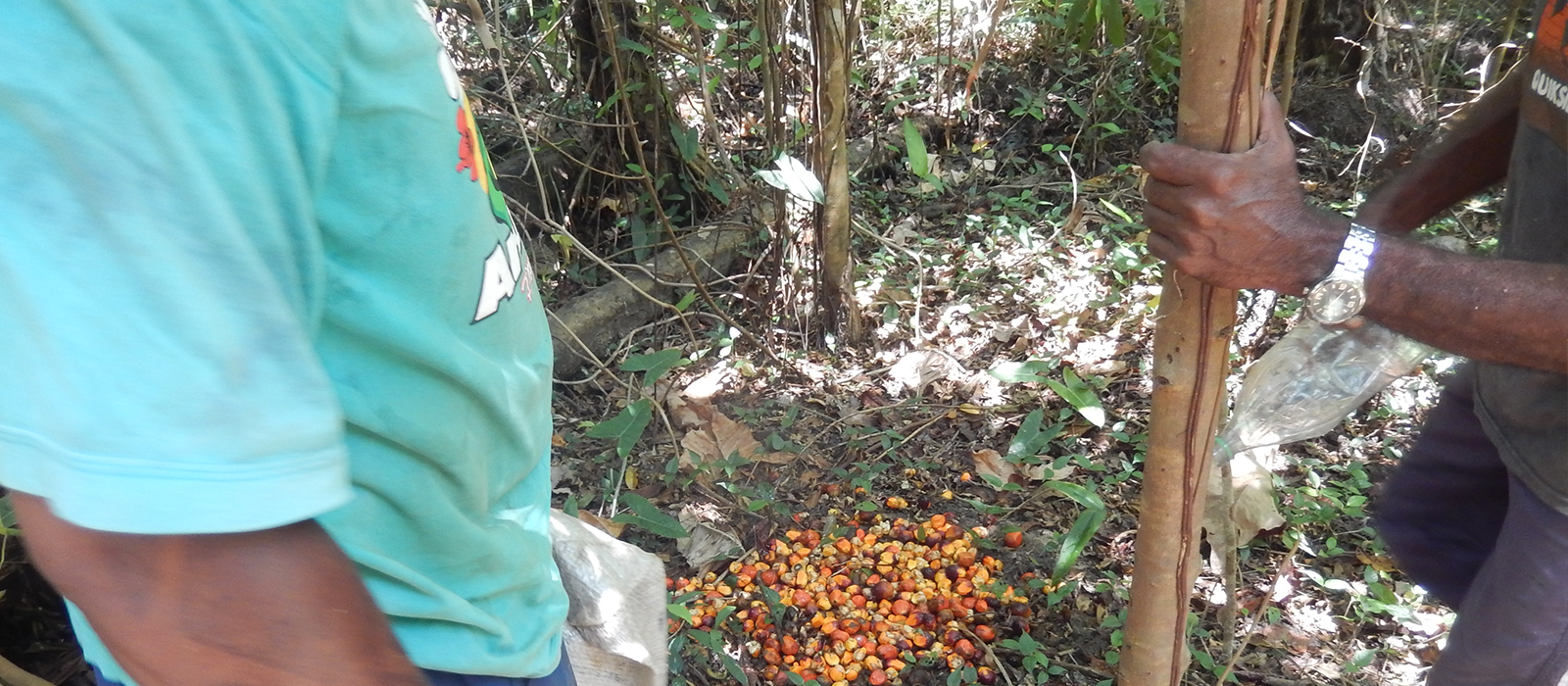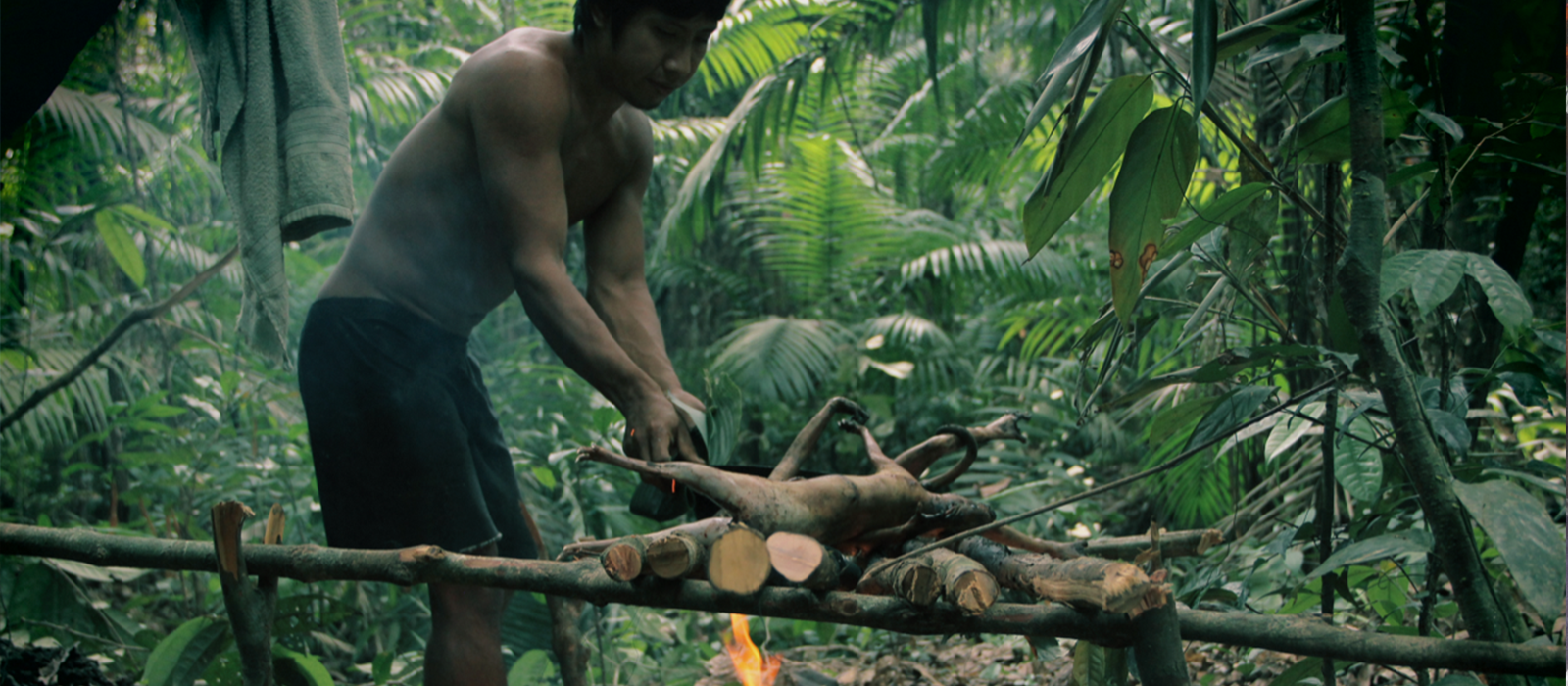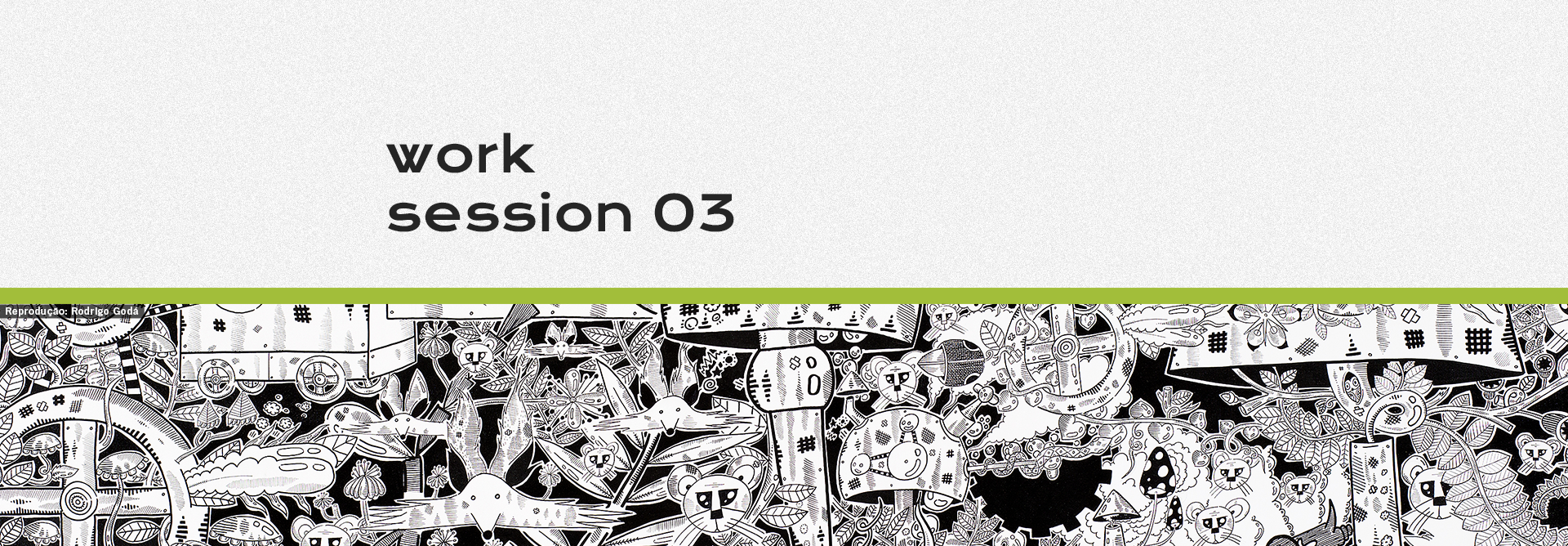Death and forms of life in hunting
Death is an unavoidable aspect of hunting. This fact should be taken as a starting point, however, to comprehending the forms of life of animals, humans and other entities involved in it. Widely mobilized at a theoretical level and in the history of anthropology, this session approaches hunting as a contemporary ethnographic theme, focusing on cinegetic activity. In exploring the latter, ethics and interspecific communication and intersubjectivity appear as dimensions associated with significant transformations, ranging from new equipment and methods to the impacts of legal bans and deforestation.
Clarisse Jabur (UnB)
Coordinator
Felipe Vander Velden (UFSCAR)
Discussant

Prey on the way – modalities of technical acts in Panara hunting
In this paper I aim to examine different modalities of technical acts that unfold during Amerindian hunting events, hoping to contribute to the understanding of the process that results in the capture of the animal. Specifically, I seek to examine the technical acts of this activity in their relation with a series of living beings and vital processes. Starting from the Panara hunting case, a group who lives in the southern part of the Brazilian Amazon, I analyze different processes triggered by hunters to intervene in the life of their preys.
In order to do so, I describe a particular and eloquent moment of Panara hunting which unfolds different actions towards predation: the hunting camp. It is a specific spatiality, which occurs during the ritual period and prior to the great ceremony, whose primary goal is to collect a number of slaughtered animals for a collective meal. A set of operations are carried out in the camp days so as to make the prey visible or “on the way”, as the Panara say. Following the idea of “agentive configuration” (Pitrou 2017; Coupaye e Pitrou 2018), I examine the combination of human and non-human agents that participate in these operations.
This work follows the hunter and his corporeality, analyzing his capacities and skills to enact efficient technical acts. Every person is animated by a singular impermanent vitality that must be motivated, resulting in an aesthetic effect (besides its importance to hunting). Next, I identify another set of actions that is part of the technical system of hunting: the shamanic operations that allow acting from a distance or requesting the intervention of non-humans. After that, I approach the set of ecological relations within which the hunter inserts himself. Here my goal is to describe the search of the Panara hunters to situate themselves in the neighborhood, parallel and in pursuit of the vital tracks of their preys.

Hunting practices among the Tabajara of the South Coast of Paraíba: technical transformations, ethnicity and vital flow management
This document focuses on the hunting activities carried out at the Southern coast of the State of Paraíba (Brazil) and their transformations over time, due to factors such as environmental surveillance by the state, the introduction of technical innovations and, since the mid-2000s, the manifestation of indigenous identity processes in the region on screen.
The South Coast of Paraíba is composed of areas of mangroves and trays covered by Atlantic Forest, as well as the establishment of large estates, farms, rural settlements and urban conglomerates with significant tourist facilities.
It must be said that there are, in this current socio-ecological-territorial context, vivid hunting practices which, despite the Brazilian Law 5197 of 1967 – which prohibits hunting except in specific situations -, have become clandestine, ruling out strategies and forcing technical choices that allow them to be carried out. Since then there has been a preference for indirect hunting methods, which are conducted using traps, and also direct methods, employing shotguns, mainly at night, through the setup of the so called “esperas” (long waits), composed of hunting towers, known as “jiraus”, and food mounds that act as bait, known as “cevas”, placed on specific points of the “varedas” (networks of tracks walked by animals that are intended to be captured). This activity was improved by the technical innovation represented by the introduction of the electrical flashlight, which allows immediate illumination, thus giving the hunter a more adequate view.
Another element to be considered is the fact that part of the region’s population recently began identifying themselves as indigenous Tabajara, with the FUNAI (Fundação Nacional do Índio or National Indian Foundation – a Brazilian governmental protection agency for Amerindian interests) even initiating the process of identification and delimitation of two indigenous lands. As such, despite the demarcation process not being concluded yet, they request the right to hunt, which is granted within indigenous lands by the Law 6001/73, in an attempt to revert their current clandestine situation.
It is by focusing on this game of relations and technical transformations that it will be shown how animals, hunters and surveillance agents form domain spaces built through the mutual perception of the traces that they leave in the environments that they live in, allowing for specific modalities of managing the vital flows promoted by their interactions.

How forests speak: hunting and conservation in the eastern Amazon
This presentation starts from the fact that Amazonian hunting is marked by interspecies exchanges, and such exchanges are threatened by environmental destruction. Based on my experience (and that of other scholars), this paper argues that the knowledge about the plants, the animals and the life itself, is based on sophisticated perceptual and communicational devices, capable of crossing the barrier of incommunicability between different species. The Awá-Guajá from Maranhão (and several other collectives), think about “hunting” in terms of perception and of perceptual dissonances. Following the ideas of my indigenous friends, I suggest that one of the ways to study hunting in the Indigenous Amazon is to be interested on what people do not say. Hunting here is understood as the art of “listening”, “imitating”, “cheating”. Hunting is the place where odor and silence resonate more than words. If the Amazonian hunting has a long multispecies history, it is full of onomatopoeia, howls, whispers, hisses, emulations and expressions that connect and detach those who kill from those who are killed. The Awa-Guajá people face a radical change in their lands, and the conservation and preservation of the forest are evoked as important not only for them (indigenous people), but above all for the non-human inhabitants of these lands, especially the animals. The idea of care (cuidar/criar) appears as an important analytical tool (and way of action) that is mobilized by my indigenous friends. The South American indigenous hunting – that connects people and animals through relationships of rearing and hunting- occurs today in landscapes destroyed and threatened, which also destroys the ways of knowing and communicating that mark this complex knowledge system. The purpose of this paper is to discuss these issues.

Shotguns, Snares, and Armadillo Traps: Hunting, Ethics, and Technique in the Hinterlands of Ceará (Brazil)
Based on ethnographic research carried out since 2013 in two municipalities of the hinterlands of the State of Ceará (Brazil), this presentation discusses the moral ambiguity regarding the use of certain hunting techniques employed to kill and capture animals. The interlocutors of this research are moradores (resident rural workers) and small landowners to whom hunting is a form of leisure and sociability, notwithstanding their decisive dependence on game to feed their families. The argumentation assumes that, whereas technology is not a domain that is independent of social life, ethical reflections and problematisations regarding the relations between human beings and other living beings (as well as the environment) may crucially influence the techniques implemented by hunters. To this end, I focus on the ‘espera’ (stand hunt), in which hunters with firearms wait for deer (Mazama spp.), and on the employment of two hunting traps: the ‘laço’ (snare), used likewise on deer hunting, and the ‘tatuzeira’ (armadillo trap), employed to capture nine-banded and six-banded armadillos (respectively, Dasypus novemcinctus and Euphractus sexcinctus) alive. Firstly, I briefly discuss the native conceptions regarding the status of non-human animals, which stresses their ‘innocence’ as well as the ‘defence’ characteristic to each species. This provides grounds, on the one hand, to lay emphasis on the sertanejo’s decisive ontological assumption that ‘each living being has a master’, and, on the other hand, that the relation between hunter and prey is a relationship between two ethical subjects, although with different possibilities of ‘entendimento’ (understanding). Subsequently, I describe the aforementioned hunting practices, discussing the sociotechnical controversies and the ethical dilemmas that traverse them – whether due to excessive hunting, the suffering inflicted on animals, or even the neglect of some hunters in the treatment towards the prey. Hence, this presentation focuses on the cynegetic activity process itself, aiming to point out the ethical problematisations that surround the implementation of those techniques.
